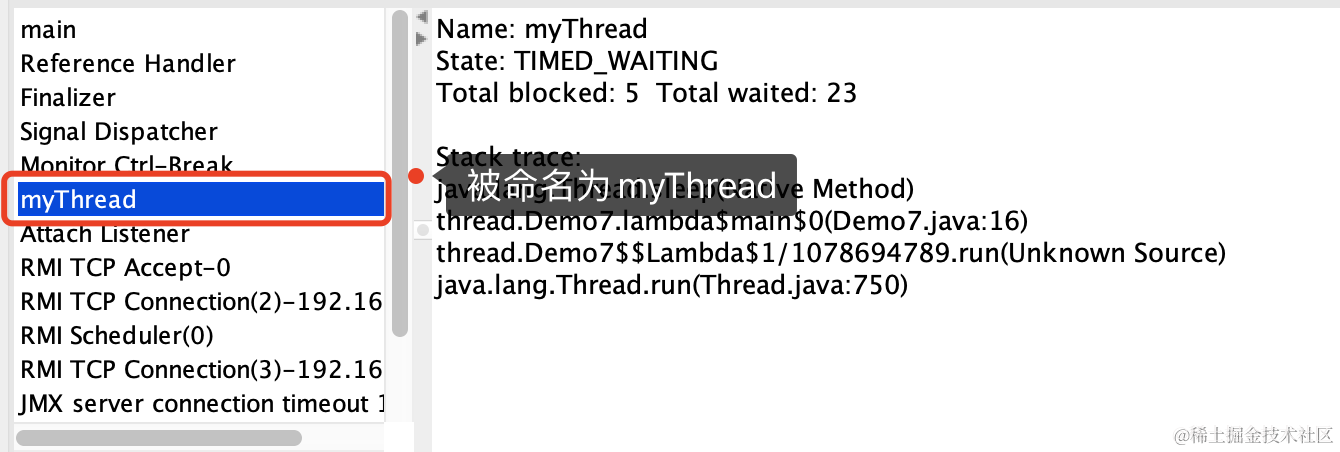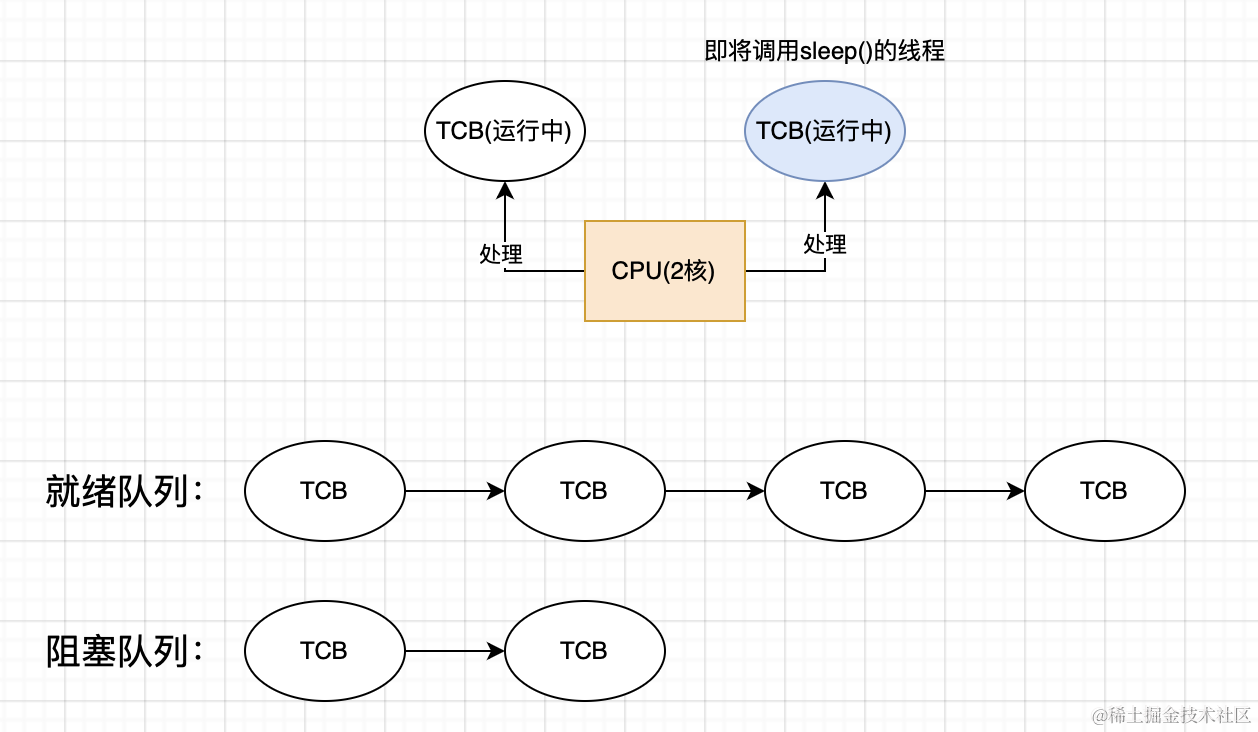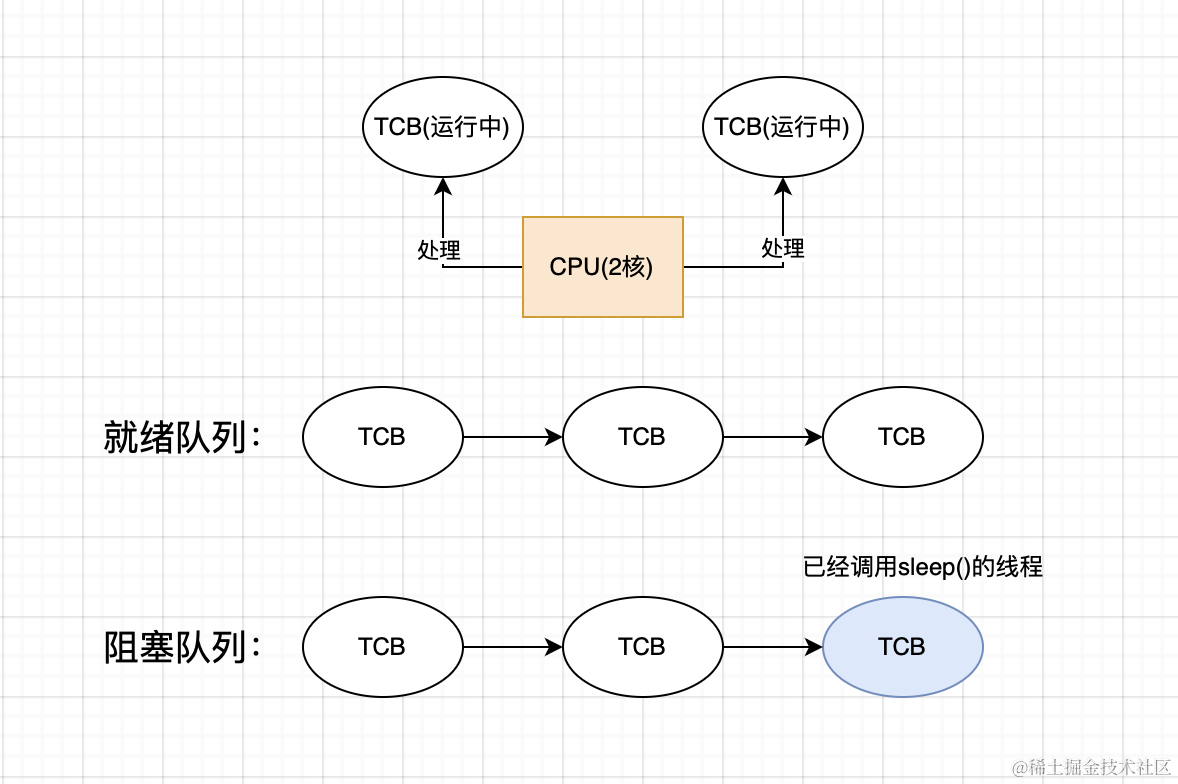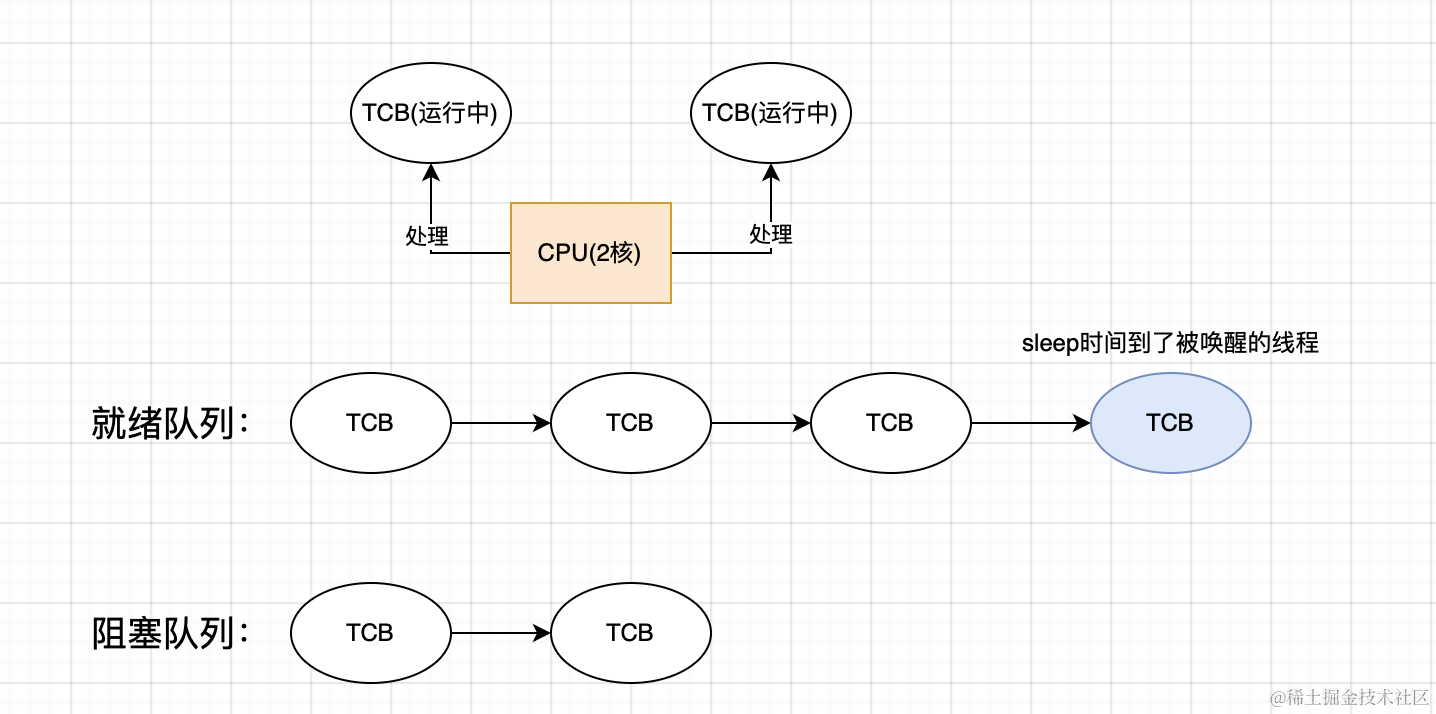Thread是JVM用于管理线程的类,换句话说,每个线程都有一个Thread对象与之关联,一个Thread对象有ID、名称、优先级、状态等属性,JVM会将这些Thread对象组织起来,用于线程调度,线程管理。
1. Thread的常见构造方法
| 方法 | 说明 |
|---|---|
| Thread() | 创建线程对象 |
| Thread(Runnable target) | 使用Runnable对象创建线程对象 |
| Thread(String name) | 创建线程对象,并命名 |
| Thread(Runnable target, String name) | 使用Runnable对象创建线程对象,并命名 |
给Thread命名的意义:上一篇文章中我们使用jconsole查看过自定义的线程,由于没有命名,它的默认名称为Thread-0,我们可以在构造函数中给线程命名(与内核中的线程一一对应),以便后续调试。
java">public class Demo7 {public static void main(String[] args) {Thread thread = new Thread(()->{while (true) {System.out.println("hello thread");try {Thread.sleep(1000);} catch (InterruptedException e) {throw new RuntimeException(e);}}}, "myThread");thread.start();while (true) {System.out.println("hello world");try {Thread.sleep(1000);} catch (InterruptedException e) {throw new RuntimeException(e);}}}
}
打开jconsole再次查看:

2. Thread的常见属性
| 属性 | 获取方法 |
|---|---|
| ID:线程在JVM中的唯一标识符 | getId() |
| 名称 | getName() |
| 状态 | getState() |
| 优先级 | getPriority() |
| 是否为守护线程 | isDaemon() |
| 是否存活 | isAlive() |
| 是否被中断 | isInterrupted() |
守护线程的解释:创建出来的线程默认为非守护线程,守护线程不会阻止进程结束,非守护线程会阻止进程结束。也就是说所有非守护线程必须执行完了进程才会结束,如果想设置线程为守护线程可以使用setDaemon(true)方法来设置线程为守护线程。
使用一下上面的api,查看Thread的属性:
java">public class Demo8 {public static void main(String[] args) {Thread t = new Thread(() -> {while (true) {try {Thread.sleep(1000);} catch (InterruptedException e) {throw new RuntimeException(e);}}}, "myThread");t.start();System.out.println(t.getId());System.out.println(t.getName());System.out.println(t.getState());System.out.println(t.getPriority());System.out.println(t.isDaemon());System.out.println(t.isAlive());System.out.println(t.isInterrupted());}
}
运行结果:下面都是线程一瞬间的属性
11
myThread
TIMED_WAITING
5
false
true
false
3. 启动一个线程——start()
创建出Thread实例,只是在JVM的堆区中创建出了一个Thread对象,并没有在操作系统中创建出一个线程,调用了start()方法才是在操作系统中创建出一个线程并完成指定的入口方法(重写的run()方法或者Runnable对象),并且当线程的入口方法完成后,该线程就随之结束了。
4. 获取线程引用——currentThread()
Thread类有一个静态方法currentThread(),用于在入口方法(线程需要做的事)内部获取到线程的引用。
- 如果是继承Thread类,重写run方法,可以直接在run方法内使用this获取到线程引用
- 但如果是Runnable内重写run方法,this就不管用了,需要使用
Thread.currentThread()方法获取引用
5. 中断线程——interrupt()
所谓的中断线程,就是让线程尽快把入口方法执行结束,Java中把中断的决定权交给被中断的线程本身,接下来我将以两种方式举例如何中断线程。
- 直接使用标识为来区分线程是否需要中断
java">public class Demo9 {private static boolean isQuit = false;public static void main(String[] args) {Thread thread = new Thread(() -> {while (!isQuit) {System.out.println("thread is running..");try {Thread.sleep(1000);} catch (InterruptedException e) {throw new RuntimeException(e);}}System.out.println("thread is finished! ");});thread.start();try {Thread.sleep(5000);} catch (InterruptedException e) {throw new RuntimeException(e);}//主线程休眠五秒后将标志位设为trueisQuit = true;}
}
thread is running..
thread is running..
thread is running..
thread is running..
thread is running..
thread is finished! Process finished with exit code 0
这种方案是可行的,Thread其实内置了标志位,不需要我们手动创建标志位
- 使用Thread自带的标志位来判断是否要中断
设置标志位的方法如下:
java">//调用后标志位就设为true了
thread.interrupt();
判断标志位的方法如下:
java">//普通成员方法,中断后不清除中断标志(还是true)
Thread.currentThread().isInterrupted()
java">//静态成员方法,中断后清除中断标志(变为false)
Thread.interrupted()
使用这两个方法来中断线程:
java">public class Demo10 {public static void main(String[] args) {Thread thread = new Thread(() -> {while (!Thread.currentThread().isInterrupted()) {System.out.println("thread is running..");try {Thread.sleep(1000);} catch (InterruptedException e) {throw new RuntimeException(e);}}});thread.start();try {Thread.sleep(5000);} catch (InterruptedException e) {throw new RuntimeException(e);}//主线程休眠五秒后中断线程System.out.println("控制线程退出");thread.interrupt();}
}
此时会发生一个问题,运行结果如下:
thread is running..
thread is running..
thread is running..
thread is running..
thread is running..
控制线程退出
Exception in thread "Thread-0" java.lang.RuntimeException: java.lang.InterruptedException: sleep interruptedat thread.Demo10.lambda$main$0(Demo10.java:18)at java.lang.Thread.run(Thread.java:750)
Caused by: java.lang.InterruptedException: sleep interruptedat java.lang.Thread.sleep(Native Method)at thread.Demo10.lambda$main$0(Demo10.java:16)... 1 more
thread.interrupt()在线程非阻塞状态和阻塞状态下会有两种行为:
- 非阻塞状态:
thread.interrupt()会修改内置的标志位为true - 阻塞状态:
thread.interrupt()方法会使如sleep()这样阻塞线程的方法出现异常,又由于我们在catch代码块中捕获到异常的处理方式是直接throw抛出异常,因此进程就会因为异常而意外中断。
由于我们写的该线程大部分时间都是处于阻塞状态,因此我们需要对catch代码块中的代码进行特殊处理:
java">Thread thread = new Thread(() -> {while (!Thread.currentThread().isInterrupted()) {System.out.println("thread is running..");try {Thread.sleep(1000);} catch (InterruptedException e) {break;}}
});
此时就可以正常地中断线程了:
thread is running..
thread is running..
thread is running..
thread is running..
thread is running..
控制线程退出Process finished with exit code 0
6. 等待一个线程——join()
join()方法的行为:
- 如果被等待的线程还没执行完,就阻塞等待
- 如果等待的线程已经执行完,就直接返回
由于调度器的策略是我们无法干涉的,但是使用join()可以控制一些必要的执行顺序,这里我将举两个案例来帮助理解join()方法
上一篇文章中我们使用了下面的代码来控制main函数阻塞,等待t1和t2执行完了,main才能解除阻塞,继续往下执行:
java">public class Demo6 {private static final long COUNT = 10_0000_0000;private static void serial() {long begin = System.currentTimeMillis();int a = 0;for (int i = 0; i < COUNT; i++) {a++;}a = 0;for (int i = 0; i < COUNT; i++) {a++;}long end = System.currentTimeMillis();System.out.println("共花费了" + (end - begin) + "ms");}public static void main(String[] args) {concurrency();}private static void concurrency() {long begin = System.currentTimeMillis();Thread t1 = new Thread(() -> {for (int i = 0; i < COUNT; i++) {int a = 0;a++;}});Thread t2 = new Thread(() -> {for (int i = 0; i < COUNT; i++) {int a = 0;a++;}});t1.start();t2.start();try {//等待t1,t2线程结束才接触阻塞并执行后续代码t1.join();t2.join();} catch (InterruptedException e) {throw new RuntimeException(e);}long end = System.currentTimeMillis();System.out.println("共花费了" + (end - begin) + "ms");}
}
第二个场景:t1,t2,main并发运行,但是他们的结束顺序必须是t1、t2、main,此时我们同样可以使用join()控制线程结束的顺序:
java">public class Demo11 {public static void main(String[] args) throws InterruptedException {System.out.println("main begin");Thread t1 = new Thread(() -> {System.out.println("t1 begin");try {Thread.sleep(1000);} catch (InterruptedException e) {throw new RuntimeException(e);}System.out.println("t1 end");});t1.start();Thread t2 = new Thread(() -> {System.out.println("t2 begin");//等待t1结束try {t1.join();} catch (InterruptedException e) {throw new RuntimeException(e);}System.out.println("t2 end");});t2.start();//等待t2结束t2.join();System.out.println("main end");}
}
上面那种写法是一直阻塞到线程结束,但是在实际开发中,更推荐使用最多阻塞多久就不阻塞了的方式(第2、3种方法):

7. 休眠线程——sleep()
sleep()方法已经在前面的演示代码中使用了很多遍了,这里我们具体谈谈操作系统中做了什么。
第一章我们在引入线程之前讲了进程的五种状态:运行态的进程在cpu上运行,就绪态的线程在就绪队列中等待调度,阻塞态的进程在阻塞队列中,不参与调度。
引入线程后调度的基本单位变成了线程,一个线程对应一个TCB,在就绪队列中的TCB参与调度器的随机调度,在阻塞队列中的TCB不参与调度器的随机调度。
- 在调用
sleep()方法前,它们是这样的:

- 当调用到
sleep()后,该线程立刻就从运行态变为了阻塞态,并且将TCB放入阻塞队列中,并且CPU立马从就绪队列中调度一个新的线程运行:

- 当sleep的时间结束时,会唤醒该线程,该线程才从阻塞态变为就绪态,并且被放入就绪队列中等待调度器随机调度:





